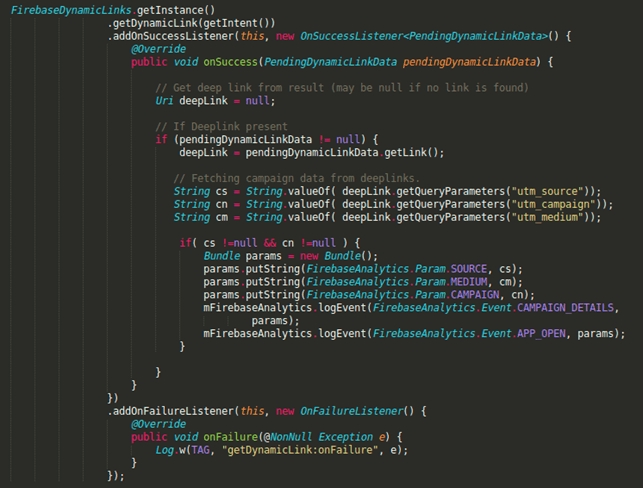Setting User Campaigns in Firebase

One of the most popular uses for LTV reporting is measuring the performance of user acquisition campaigns. In order to track individual campaigns, you must enable the Campaign attribute to be set on the user’s device. You can do this 2 ways: Via a campaign referral link or by a post-back from your MMP of choice.
Note: Firebase will automatically track campaigns from a variety of acquisition sources, as listed here.
Setting Campaigns Via Referral Link / Deep link
If you’re interested in adding a custom campaign source, you’ll need to execute 3 steps:
1. Tag all referral links with UTM parameters
To store custom traffic, you’ll need to have your incoming campaign traffic set with the proper UTMs. To set these you can use Google Play URL Builder.
2. Fetch UTMs from the deep link in your app
Essentially, this process will capture the campaign referral link in your app.
3. Set Parameters as Firebase User Property
Below is an example on Android from a deep link:

Image courtesy of Tatvic
More information on this strategy available here.
Setting Campaigns Via an MMP
Quite simply you’ll accept the campaign ID & other parameters via the MMP via a post-back, or referral ID sent to the device. Once these are set to the user’s user property (iOS and Android)– most often the “Source”– you’ll have access to the campaign ID in Firebase.
Below is an Android example of passing an AppsFlyer install event to the Firebase Campaign attribute.

The user property is sent with each event, so AdLibertas Audience Reporting will be able to report on campaigns once they’ve been set at the Firebase User Property, even if the user-property is set later in the app’s lifecycle.
Last updated